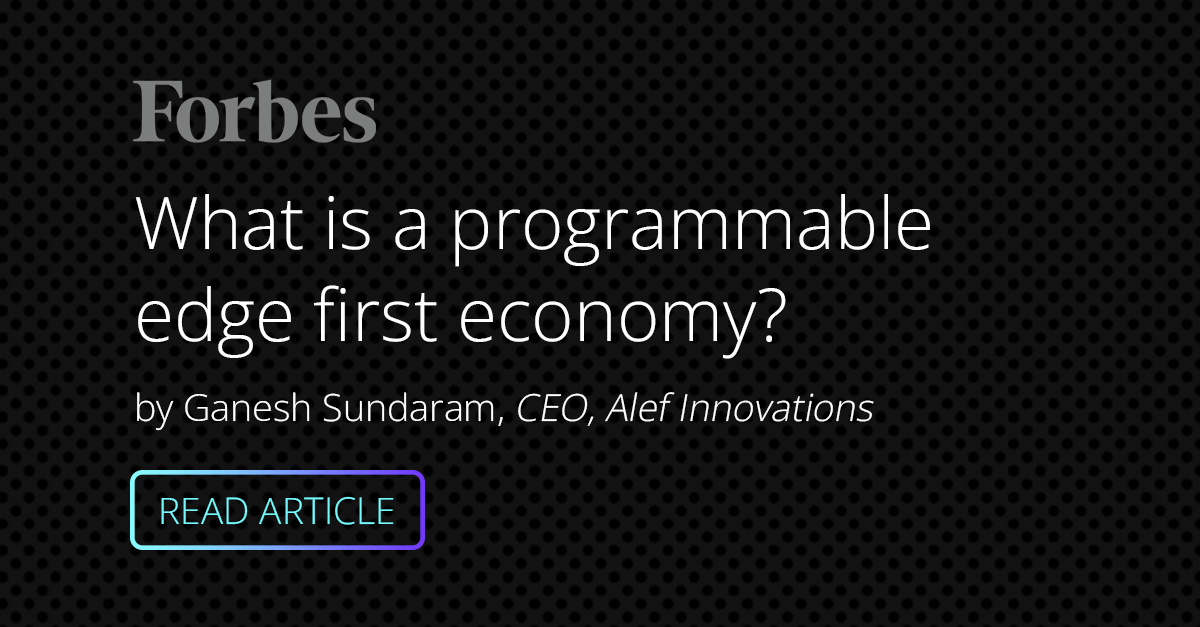Dr. Ganesh Sundaram, CEO Alef Innovations | Forbes Councils Member
Edge technology (edgetech) has exploded in popularity in recent years, but this trend has been a long time coming. Almost a decade ago, the power of the edge was demonstrated in 4G mobile networks, culminating in the adoption of protocols and architectures to realize a Mobile Edge framework as a key component of 5G standards.
Recently, catalyzed by pandemic-era business continuity processes, a massive movement is afoot toward off-premise computing at a near-premise edge data center. This, in turn, has accelerated the secure expansion of enterprise intranets beyond the physical boundaries of branch offices. Enterprise IT now has new tools to accelerate digital transformation initiatives to realize a plethora of new edge use cases almost simultaneously.
Edgetech is no longer just a latency-driven application performance enhancement tool. Given the advancement of digital transformation across verticals, edgetech is now a recognized transformative IT trend. An era of constant innovation is leading to improved cost efficiencies for existing workloads while simultaneously discovering unit economics for newer workloads.
Micro data centers with different form factors across a variety of locations, including neighborhood retail stores, are now part of the conversation. This exponential transformation has been fueled in part by the pandemic crisis catalyzing new areas of economic discoveries. This is now the new normal, and it is time to spark an edge-first internet economy to sustain and grow the gains.
However, the opportunity landscape for edgetech adoption is not universal at the moment. For instance, while enterprises across manufacturing, logistics, healthcare and education verticals are early adopters, other verticals such as tourism and hospitality are taking a wait-and-see approach. Interestingly, the size of the organization does not seem to matter if adoption friction can be demonstrably low. On the other hand, if the enterprise has not adopted cloud technologies, then understanding the power of edge platforms poses a challenge.
Rise Of Edge-First Programmable Platforms
Edge-first platforms have continued to rise in popularity in recent years, and a few basic principles are in play as enterprises expand on digital transformation initiatives.
- Edge is where connectivity meets computing at the point of consumption. A first and arguably fundamental step towards edge-first includes orchestrationAutomated configuration for coordination and management of various software systems and processes, typically in cloud-based environments. Various tools such as Puppet and Ansible are available for software workflow orchestration on the cloud. More of software engines where the traffic resides at the edge rather than routing traffic to a centralized cloud where software engines typically reside.
- Edge data centers are power, bandwidthBandwidth is the maximum rate of data transfer across a given path. Bandwidth may be characterized as network bandwidth, data bandwidth, or digital bandwidth. It generally refers to the size of the pipe and the speed that carries the data back and forth, not necessarily the volume of traffic that passes through. More and compute-constrained compared to their cloud counterparts. Hence, any edge-first platform is about distributing workloads selectively—i.e., orchestrating near real-time workloads and corresponding microservices across a hierarchy of edge locations based on their latencyTime required to send data over two points in a network. More profile while retaining non-real-time workloads and control/management functions in centralized cloud locations.
- The rise of Neutral Host platforms—neutral and agnostic to providers from connectivity to cloud. This aspect is critical to the horizontal expansion of ecosystem participants, especially given the demand for edgetech across a heterogeneous mix of verticals.
There is much to be learned from the multiplier effect of cloud-tech platforms, and the edgetech value chain is by no means reinventing the wheel or starting from scratch. However, we cannot blindly copy technology from the past and hope to achieve the desired outcomes in a new setting. Some significant areas of innovation are in place and need to be sustained. The success of various web/cloud platforms owes much of it to programmability through APIs. Deconstructing monolithic systems into individual services, abstracting them through APIs while customizing through programmable frameworks is a hallmark of these platforms. Clearly, APIs have allowed for the exchange of data and services between businesses and service providers.
As we contextualize this to the edge, we are witnessing the early makings of a programmable edge with edge APIs. In other words, APIs are no longer limited to integration and automation—any APIApplication Programmatic Interface An intermediary between two Applications/Systems or Generic Connectivity Interface to an Application. Software applications communicate with one another via APIs. Learn more about APIs and Private Networks More first mantra includes APIs as product offerings, but given the broad applicability and the horizontal nature of edge APIs, it is important to observe that unified programmable frameworks are at their infancy.

